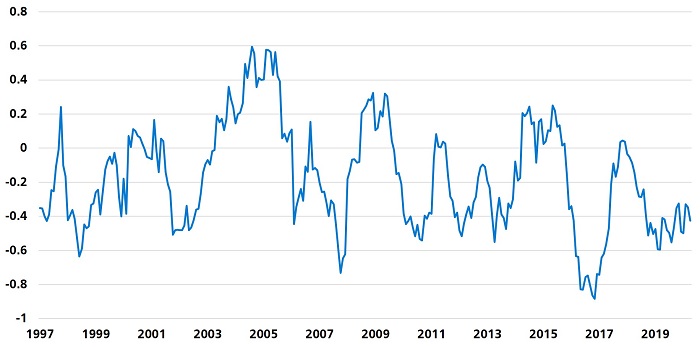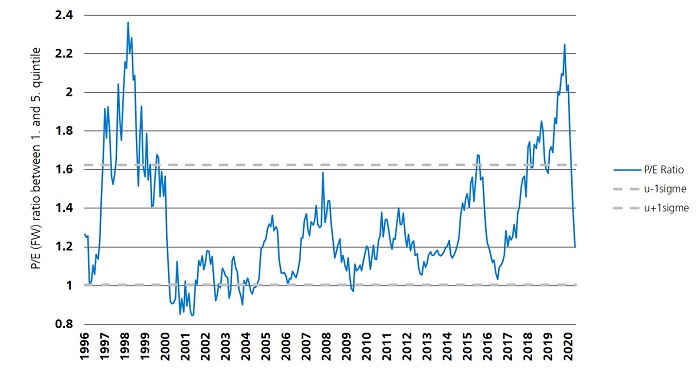The rotation from growth to value stocks that began last year has once again received a strong boost at the start of the year. In the USA, the «blue wave», i.e. the Democrats' majority in both chambers of Congress, has paved the way for a USD 1.9 trillion economic stimulus package, which will soon be supplemented with an infrastructure programme worth around USD 2 trillion.
Meanwhile, inflation expectations have risen sharply and long-term interest rates have also risen. This in turn favours value stocks, as the «duration» of their earnings is significantly shorter than that of growth stocks. Together with the cyclical recovery, these value catalysts are likely to remain in place for some time to come. Based on this, an extremely remarkable development is taking place in the background, which is particularly worth paying attention to as a quantitative investor.
Value versus momentum
hen value is in the spotlight, momentum usually goes through a difficult time and vice versa. This is confirmed not only by various studies, but also in the following chart, which shows the correlation of the two factors over time. The blue line has been below zero for around 10 years, with few exceptions, so that the two factors are essentially observed to have a negative mutual relationship. One reason for this is that the low valuation of value stocks is usually based on weak performance in the past. Value stocks therefore generally have a negative momentum.





